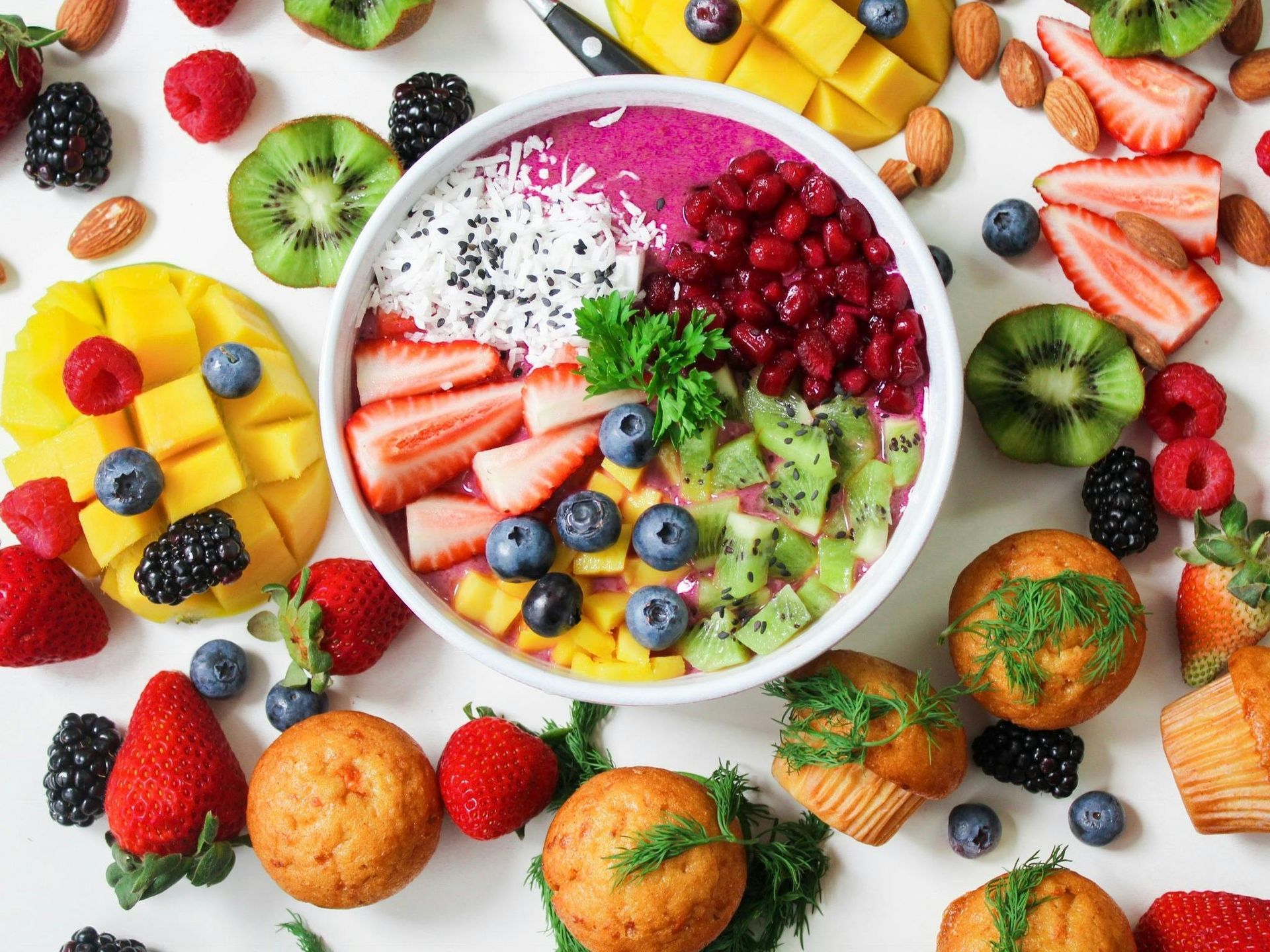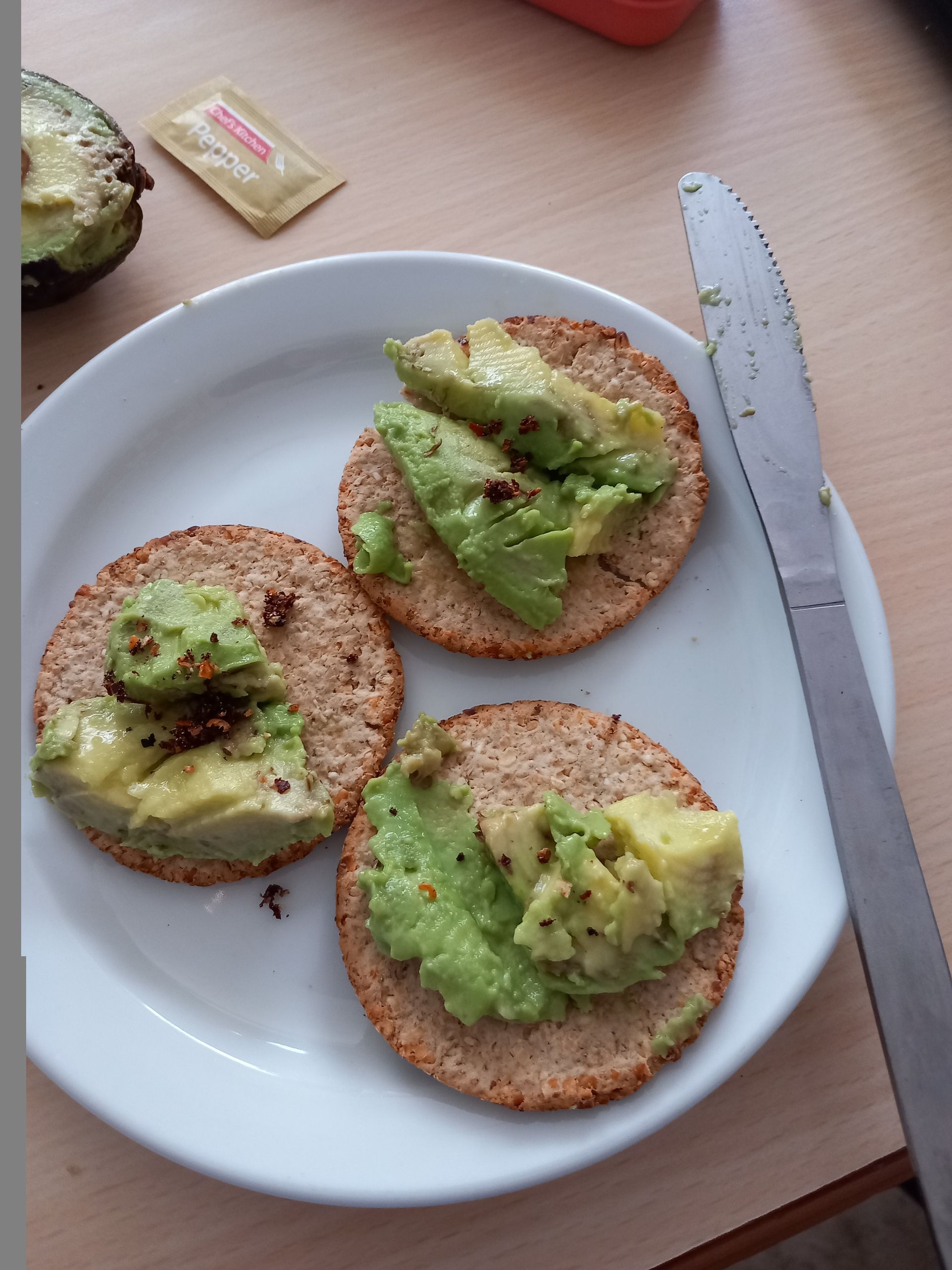The Latest Articles on Women's Health

Postpartum Nutrition: What Every New Mum Needs to Eat to Recover and Thrive You’ve just brought a whole human into the world. You’re feeding, bleeding, healing, leaking, and probably running on broken sleep and dry toast. But while everyone is fussing over the baby, one question often gets ignored: Who’s feeding you? Postpartum nutrition isn’t just about “bouncing back” or losing weight. It’s about rebuilding — your nutrients, your energy, your hormones, and your nervous system. What you eat after birth can shape your recovery, your mood, your milk supply, and your long-term health. Let’s talk about the best foods for postpartum healing — and what your body really needs in those early weeks and months. 💥 Why Postpartum Nutrition Matters During pregnancy and birth, your body gives up a lot. You lose blood, minerals, and sleep. Your uterus contracts. Your hormones drop off a cliff. And if you’re breastfeeding? That’s another massive energy and nutrient drain. Ignoring your recovery isn’t a badge of honour — it’s a health risk. Nutrient depletion after birth is real and can lead to: Postnatal fatigue Hair loss Low milk supply Mood swings or postnatal depression Thyroid issues Poor wound healing (especially after C-section or tearing) Food is one of the most powerful ways to replenish, stabilise, and repair. ✅ What to Eat After Giving Birth 1. Protein to Rebuild Tissue You need protein for wound healing, hormone production, and breastmilk quality. Best sources : eggs, chicken, salmon, lentils, Greek yoghurt, bone broth, tofu 🎯 Aim for: 20–30g per meal 2. Iron to Replace Blood Loss Low iron = low energy, poor healing, mood dips. Best sources : red meat, spinach, lentils, pumpkin seeds, molasses 💡 Tip: Pair with vitamin C (citrus, berries) to boost absorption 3. Healthy Fats for Hormones and Milk Fats support brain health, hormone balance, and help you feel satisfied. Best sources : avocado, olive oil, salmon, flaxseeds, nuts, ghee 4. Complex Carbs for Energy and Recovery No, you don’t need to cut carbs. You need the right carbs — the slow-burning, fibre-filled kind. Best sources : oats, sweet potatoes, quinoa, brown rice, beans 5. Calcium + Magnesium for Nerves and Sleep Essential for calming your nervous system and preventing that jumpy, overwhelmed feeling. Best sources : leafy greens, almonds, tahini, chia seeds, sesame, sardines 🍲 Ideal Postpartum Meals Your body wants warm, soft, nourishing food right now — think stews, soups, porridges, curries, roasted root veg. Some postpartum favourites: Oat porridge with flaxseed, banana, nut butter Bone broth with shredded chicken, spinach, rice noodles Slow-cooked beef stew with carrots and potatoes Chickpea and sweet potato curry with brown rice Scrambled eggs with sautéed spinach and sourdough toast 💡 Batch cook and freeze during late pregnancy if you can! 🍼 Breastfeeding? These Nutrients Matter Even More Breastfeeding increases your need for: Zinc (immune health + tissue repair) Choline (baby’s brain + nervous system) Vitamin B12 (energy + milk quality) DHA/Omega-3 (brain + mood) Even if you’re not breastfeeding, these still support your recovery. 🧪 The Nutrients Most New Mums Are Low In Many new mums are deficient in: Iron B12 Vitamin D Iodine Zinc Magnesium Omega-3 fats Get tested where possible, or work with a practitioner to personalise your postnatal supplements. (Note: Most generic multivitamins are not enough postpartum — especially if you had a long labour, blood loss, or are breastfeeding.) 🚫 What to Limit After Birth 1. Cold and Raw Foods These can be hard to digest in the early weeks. Focus on warm, cooked meals for nourishment and gut health. 2. Sugar + Refined Carbs They spike your blood sugar and worsen fatigue, mood, and inflammation. 3. Caffeine Tempting, but too much can affect baby’s sleep (and yours) and increase anxiety. 4. Ultra-Processed Foods These offer calories, but not nutrients — which is the opposite of what you need. 🌿 Postpartum Herbs That Can Help (Note: Always check with your healthcare provider, especially if breastfeeding.) Fenugreek / Moringa – milk supply support Nettle – iron and mineral-rich Chamomile – nervous system calm Ginger + Turmeric – anti-inflammatory and digestive support 👶 Postpartum Nutrition Is Self-Care — Not a Luxury You just created and delivered life. You deserve to eat, heal, rest, and feel like you again — not just a feeding machine. If you’re exhausted, depleted, or feeling like your body hasn’t bounced back… you don’t need to push harder. You need to rebuild gently from the inside out . I work with new mums to help them regain energy, stabilise mood, support milk supply, and get their hormones back on track. 📞 Book a free discovery call and let’s get you back to thriving — not just surviving. Paula x Nutritional Therapist for Mums, Hormones, and Healing After Birth

Fertility Foods: 10 Nutrients That Boost Your Chances of Conception Naturally You’re tracking your cycle, peeing on sticks, cutting out caffeine, and trying to stay “relaxed” while everyone around you seems to be getting pregnant by accident. Trying to conceive is beautiful — and brutal. Especially when it feels like your body isn’t cooperating. Here’s the good news: what you eat can have a powerful impact on your fertility. Not in a fluffy “just eat more kale” kind of way — but in a clinical, cellular, hormone-supporting, egg-quality-boosting way. Let’s dive into the 10 most important fertility nutrients — and how to get them from real food so you can nourish your body and boost your chances of conception naturally. 🍳 1. Folate (Not Folic Acid) Folate is essential for cell division, egg development, and reducing neural tube defects — but the synthetic version (folic acid) isn’t well processed by everyone, especially those with MTHFR gene variants. Best food sources : dark leafy greens, lentils, asparagus, avocado, liver Daily target : 400–800mcg (from food + a methylated supplement) 🐟 2. Omega-3 Fatty Acids Omega-3s help regulate inflammation, improve cervical mucus, and support hormone production. They also play a key role in sperm quality (if you’re TTC with a partner). Best food sources : wild salmon, sardines, flaxseeds, chia seeds, walnuts Bonus tip : Look for a purified fish oil supplement with both EPA + DHA 🥚 3. Choline Choline is critical for early fetal brain development — and most women aren’t getting enough. It also supports liver detoxification (important for clearing excess estrogen). Best food sources : eggs (with the yolk!), liver, soybeans, broccoli Daily target : 450mg minimum, ideally closer to 550–600mg when TTC 🔋 4. Iron Low iron can impact ovulation, egg health, and implantation. Women with heavy periods or vegetarian diets are often low and don’t know it. Best food sources : red meat, lentils, spinach, pumpkin seeds, quinoa Tip : Pair iron-rich foods with vitamin C (e.g. red peppers, strawberries) to boost absorption 💎 5. Zinc Zinc is essential for egg development, follicle health, and hormone production (especially FSH and LH, which trigger ovulation). It’s also critical for sperm quality. Best food sources : oysters, pumpkin seeds, beef, chickpeas Supplement if needed : 15–30mg/day, ideally with copper 🔬 6. Vitamin D It’s not just for bones — vitamin D plays a big role in reproductive hormone balance, ovarian function, and implantation. Best food sources : salmon, eggs, mushrooms, fortified foods Reality : Most women in the UK are deficient. Test your levels and supplement if needed (2000–4000 IU daily is common) 🌾 7. B Vitamins (Especially B6 + B12) These are key for hormone regulation, egg quality, luteal phase support, and stress resilience. Best food sources : eggs, turkey, tuna, bananas, leafy greens, beef liver Tip : A good methylated B-complex can be a game changer for energy and hormonal balance 🔧 8. Magnesium Magnesium supports progesterone, eases PMS, reduces stress, and helps regulate insulin (a key factor in PCOS-related infertility). Best food sources : dark chocolate, almonds, spinach, pumpkin seeds, black beans Try : Magnesium glycinate in the evening for calm + sleep 🌿 9. CoQ10 CoQ10 supports mitochondrial energy in cells — and eggs need a lot of energy to mature properly and fertilise. Best food sources : organ meats, sardines, beef Supplement version : Ubiquinol is the most bioavailable; 100–300mg daily can improve egg quality, especially after age 35 🌈 10. Antioxidants (Like Vitamin C, E, and Selenium) Oxidative stress damages egg and sperm cells. Antioxidants help protect them and improve overall reproductive health. Best food sources : berries, Brazil nuts (selenium!), sunflower seeds, oranges, kiwis, leafy greens, olives 🧠 Bonus: What You Don’t Eat Also Matters Avoid (or reduce): Refined sugar and white carbs – spike insulin, disrupt hormones Alcohol – depletes nutrients like B vitamins and magnesium Ultra-processed foods – loaded with additives and inflammatory oils Caffeine – one cup a day is fine, but more may increase miscarriage risk. You Are Not Alone — and You’re Not Doing It Wrong Trying to conceive is deeply emotional, and it’s easy to feel like your body is broken. But fertility is a sign of overall health — and by supporting your body with the right nutrients, you’re giving yourself the best possible chance. If you want help building a personalised nutrition and supplement plan that fits your unique body and goals, I’d love to support you. 📞 Book a free discovery call — let’s map out your next steps. Your hormones can heal. Your eggs can thrive. And your next cycle can feel like a fresh start. Paula x Nutritional Therapist specialising in Fertility, Hormones & Women’s Health

PCOS Meal Plan: What to Eat (and Avoid) for Hormone Balance If you have PCOS, you’ve probably been told to “just lose weight,” go on the Pill, or cut out carbs forever. And honestly? That advice is outdated, unhelpful, and often makes things worse. PCOS is a hormonal condition, not a character flaw. And food — the right food — can be one of the most powerful ways to manage it naturally. Let’s break down exactly what to eat, what to avoid, and how to build a sustainable PCOS-friendly meal plan that actually supports your hormones, energy, fertility, skin, and sanity. What Is PCOS, Really? PCOS (Polycystic Ovary Syndrome) affects 1 in 10 women — though many don’t even know they have it. It’s not just about cysts on your ovaries. It’s a full-body condition tied to: Insulin resistance (hello blood sugar rollercoaster) High androgens (like testosterone) Irregular ovulation or periods Inflammation Symptoms include: Weight gain or inability to lose it Acne and oily skin Hair loss (especially at the temples) Hair growth in unwanted places (chin, chest) Irregular or missing periods Fertility struggles Fatigue and mood issues Why Food Matters for PCOS The most effective way to manage PCOS naturally? Balance your blood sugar. When blood sugar spikes and crashes all day, insulin rises — and high insulin makes PCOS worse by: Increasing testosterone Disrupting ovulation Driving cravings and weight gain Causing inflammation The good news? With the right foods, you can lower insulin, reduce symptoms, and even restore ovulation. ✅ What to Eat with PCOS 1. Protein with Every Meal Helps stabilise blood sugar and curb cravings Try: eggs, chicken, turkey, tofu, lentils, Greek yoghurt, salmon 2. Fibre-Rich Carbs Slows glucose absorption and feeds gut health Try: oats, sweet potatoes, lentils, quinoa, berries, apples, chia seeds 3. Healthy Fats Support hormone production and reduce inflammation Try: avocado, olive oil, nuts, seeds, fatty fish, tahini 4. Anti-Inflammatory Foods PCOS is inflammatory by nature Try: leafy greens, turmeric, ginger, oily fish, berries, green tea 5. Low-Glycaemic Foods These help reduce insulin spikes Think: real, whole food — not ultra-processed carbs ❌ What to Limit (or Avoid) You don’t have to be perfect — but reducing these can make a huge difference: 1. Refined Carbs & Sugar White bread, pastries, biscuits, cereals, fizzy drinks These spike blood sugar and worsen insulin resistance 2. Dairy (for some) Can worsen acne and androgens in some people Consider switching to dairy-free for a few weeks to test 3. Alcohol Disrupts blood sugar and increases inflammation 4. Processed Foods Full of hidden sugars, inflammatory oils, and additives that wreck hormones 💊 Helpful Supplements for PCOS (Always check with a practitioner before starting anything new!) Inositol (especially Myo + D-Chiro blend) – improves insulin and ovulation Magnesium – helps with blood sugar, sleep, and PMS Zinc – reduces acne and supports ovulation Omega-3 – anti-inflammatory and great for skin + hormones Chromium or Berberine – for insulin sensitivity You Don’t Need to Cut Out Entire Food Groups Forget the keto-carnivore-gluten-free madness unless you’ve got a medical reason. Sustainability > extremes. The goal isn’t to deprive yourself — it’s to nourish your body so it works with you, not against you. 🧪 Don’t Guess — Test PCOS isn’t one-size-fits-all. Some women have more adrenal issues, others struggle with insulin, some have high androgens, and others just can’t seem to ovulate. Functional testing can help you understand: How your blood sugar and insulin behave If you’re ovulating (and when) What your testosterone and DHEA levels look like How your gut and inflammation are affecting your hormones You Are Not Broken PCOS can feel like a full-time job — but with the right tools, it becomes something you manage, not something that manages you. You don’t need fad diets. You need real food, real strategy, and real support. 💬 Book a free discovery call and let’s figure out what your body needs to start healing from the inside out. Paula x Nutritional Therapist for Women with PCOS, Period Problems + Hormonal Havoc

What to Eat for a Healthy Menstrual Cycle: A Week-by-Week Food Guide Let’s be honest — most of us were never taught how to eat in sync with our menstrual cycle. We were handed pads, told to expect pain, and maybe handed a chocolate bar when PMS hit. That’s about it. But your cycle isn’t something to suffer through or suppress. It’s actually one of the most powerful tools you have for understanding what your body needs. And guess what? What you eat during each phase of your cycle can make or break your hormones . So let’s break it down, week by week — and learn how to use food as your hormonal secret weapon. 🔁 First, the Four Phases of Your Menstrual Cycle: Menstrual (Days 1–5) – When you bleed. Hormones are low, your body is shedding the uterine lining. Follicular (Days 6–13) – Hormones begin to rise. Your energy and mood usually improve. Ovulatory (Days 14–16) – Oestrogen peaks, you release an egg, and libido spikes. Luteal (Days 17–28) – Progesterone rises to support a potential pregnancy. PMS happens here if things are off balance. Everyone’s cycle length is slightly different, so adjust these windows to match your own rhythm. 🩸 Week 1: Menstrual Phase (Your Period) What’s happening: Oestrogen and progesterone are at rock bottom. You’re bleeding. Energy is low. Your body is working hard to renew itself. What to eat: Iron-rich foods : lentils, red meat, spinach, pumpkin seeds Warming, comfort foods : soups, stews, root vegetables Anti-inflammatory : turmeric, ginger, berries Supplements that help: Magnesium (to ease cramps and support mood) Iron (if your periods are heavy) Bonus tip: Stay warm, rest more, and reduce raw/cold foods — your body needs support, not salad right now. 🌱 Week 2: Follicular Phase (Post-Period Energy Boost) What’s happening: Oestrogen begins to rise again, and so does your energy, motivation, and mental clarity. What to eat: Light, fresh foods : salads, lean proteins, grains Fermented foods : sauerkraut, kefir, kimchi — oestrogen metabolism relies on a healthy gut Nutrient-rich plants : spinach, beets, avocado, berries Supplements that help: B vitamins (support energy and hormone metabolism) Probiotics (for gut health and estrogen clearance) Bonus tip: This is the best time to try new things, be social, and even increase workouts if you like — you’ll feel more capable and resilient. 💃 Week 3: Ovulation Phase (Your Hormonal Peak) What’s happening: Oestrogen is at its highest, and luteinising hormone triggers ovulation. You feel sexy, confident, vibrant. What to eat: Zinc-rich foods : oysters, seeds, legumes (supports ovulation) Fibre-rich foods : broccoli, carrots, apples (clear excess estrogen) Antioxidants : colorful veggies, green tea, citrus Supplements that help: Zinc Vitamin C Bonus tip: Oestrogen dominance is common, so this is a great time to support detox pathways — think cruciferous veg and water with lemon. 😩 Week 4: Luteal Phase (PMS Danger Zone) What’s happening: Progesterone rises to prep for pregnancy. If there’s no fertilisation, levels drop and PMS symptoms can hit. This is when cravings, mood swings, bloating, and fatigue can surface — especially if estrogen is too high and progesterone too low. What to eat: Complex carbs : sweet potato, quinoa, oats (to steady blood sugar + soothe cravings) Magnesium-rich foods : dark chocolate, almonds, leafy greens Healthy fats : avocado, salmon, flax (to support progesterone) Supplements that help: Magnesium Vitamin B6 Evening primrose oil Bonus tip: Cut back on sugar, caffeine, and alcohol here — they make PMS symptoms worse. Up your self-care instead. 💡 Why Cycle-Syncing Nutrition Works When you eat in tune with your hormonal rhythm, you: Reduce PMS symptoms Improve fertility Support thyroid and adrenal health Balance mood and cravings Feel more connected to your body (instead of constantly at war with it) It’s not about perfection. It’s about awareness and small shifts that align with your biology. Ready to Balance Your Hormones Naturally? If your cycle is chaotic, your moods are a rollercoaster, or your periods are a nightmare — this is your sign to stop guessing and start testing. Functional nutrition can help you understand exactly what your body needs. 📞 Book a free discovery call and let’s work out what’s really going on with your hormones. Because your period isn’t just something to survive — it’s something you can thrive through. Paula x Nutritional Therapist for Women Who Want Their Bodies (and Sanity) Back

Top 7 Signs Your Hormones Are Out of Whack (and What to Do About It) You’re not crazy. You’re not lazy. And no, it’s not “just stress” or “just your age.” If you’re feeling tired, irritable, puffy, moody, spotty, or stuck in a cycle of exhaustion and cravings — I’m going to go out on a limb and say your hormones are likely out of whack . Most women are walking around with some level of hormonal imbalance and don’t even know it. Why? Because we’ve been taught to normalise symptoms that are anything but normal. Let’s break the silence and the cycle. 1. You Feel Tired… All. The. Time. You wake up tired. You crash at 3pm. You could nap standing up. Chronic fatigue is one of the most common signs of hormone imbalance, especially when cortisol (your stress hormone) is dysregulated or your thyroid is sluggish. 🩺 The root: Low cortisol in the morning High cortisol at night (tired but wired) Underactive thyroid Blood sugar swings 🍳 What helps: Eat protein with every meal (especially breakfast) Don’t skip meals Test your thyroid properly (not just TSH!) Reduce caffeine — sorry, I know 2. You’re Moody, Anxious, or Emotionally Volatile One minute you’re weepy at a puppy video, the next you’re irrationally snapping at your partner for breathing too loud. Hormones like estrogen, progesterone, and cortisol all play a role in mood. When they’re off, you’re off. 🩺 The root: Low progesterone (calming, soothing) High estrogen or estrogen dominance Cortisol overload 🍳 What helps: Magnesium glycinate at night B vitamins, especially B6 Seed cycling (yes, it works!) Ditch the ultra-processed junk food 3. Your Period Is a Monthly Horror Show Heavy bleeding, cramps, clotting, mood swings, PMS rage, breast tenderness — sound familiar? A healthy period shouldn’t require time off work, a hot water bottle glued to your belly, or rage-texting your ex. 🩺 The root: Estrogen dominance Low progesterone Poor detox/liver sluggishness 🍳 What helps: Cruciferous veg (broccoli, cauliflower, kale) to help clear excess estrogen Track your cycle and support progesterone in the luteal phase 4. You’ve Got Stubborn Weight Gain (Especially Around the Belly) You're eating “healthy,” exercising, and STILL the scales won’t budge — especially around your midsection. This often points to insulin resistance or cortisol issues, both of which wreak havoc on hormones. 🩺 The root: Insulin resistance High cortisol Estrogen and testosterone imbalances 🍳 What helps: Prioritise protein and fibre Walk after meals Don’t overtrain (yes, too much HIIT can backfire) Get your insulin and blood sugar tested — not just glucose 5. Your Skin Is Breaking Out Like a Teenager Chin acne? Jawline breakouts? Oily skin? Yep — that’s hormonal. Adult acne is often tied to high androgens (like testosterone) and insulin resistance — both common in PCOS. 🩺 The root: Elevated androgens Poor gut health Blood sugar issues 🍳 What helps: Zinc (natural anti-androgen) Balance blood sugar with meals Reduce sugar Address gut health 6. You Have Low Sex Drive or Vaginal Dryness Your brain wants to want it… but your body’s not getting the memo. Low libido, vaginal dryness, pain during sex — all point to hormonal shifts, especially in the perimenopause years. 🩺 The root: Low estrogen or testosterone Cortisol burnout Thyroid imbalance 🍳 What helps: Healthy fats (hello, avocado) Vitamin E and omega-3s Address stress and adrenal fatigue 7. You’re Struggling with Sleep — Either Falling or Staying Asleep If you’re staring at the ceiling at 2am, waking at 5am, or feeling wired at night, your circadian rhythm might be fried. 🩺 The root: Cortisol dysregulation Low progesterone Blood sugar dips overnight 🍳 What helps: Magnesium glycinate or L-theanine Small protein snack before bed No screens after 9pm Dim lights after dinner and get morning sunlight What You Can Do (That Isn’t Just “Eat Healthy and Stress Less” 🙄) Most women are told their symptoms are “just part of being a woman,” or they’re offered the Pill, antidepressants, or told to lose weight — without anyone asking why their body is struggling in the first place. You deserve better. You deserve answers. 🧪 Functional lab testing can uncover what’s really going on — from cortisol to estrogen, thyroid to insulin. 🥦 Personalised nutrition can help you bring things back into balance naturally. 🧠 Lifestyle changes (that don’t feel like punishment) can restore your energy, mood, cycle, and sleep. Want to Know If YOUR Hormones Are Out of Whack? You’re not broken. You’re just out of balance — and that’s fixable. Let’s get your energy, mood, skin, and cycle back in harmony. Paula x Nutritional Therapist & Women’s Health Specialist

Here are six common pregnancy myths debunked: 1️⃣ "You should eat for two." 🔍 Reality: While calorie needs do increase during pregnancy, it's not double! In the first trimester, no extra calories are needed. In the second trimester, you need about 300-350 extra calories , and in the third, around 450 extra calories . Quality over quantity is key! 2️⃣ "Heartburn means your baby will have lots of hair." 🔍 Reality : While some studies suggest a mild correlation, heartburn is mostly caused by pregnancy hormones relaxing the esophagus, allowing stomach acid to rise—not by your baby’s hair growth! 3️⃣ "You can't drink coffee at all." 🔍 Reality : Moderate caffeine intake (under 200 mg per day ,) is generally considered safe during pregnancy. Just be mindful of caffeine in tea, chocolate, and soft drinks too! 4️⃣ "You should avoid exercise to prevent harm to the baby." 🔍 Reality : Exercise is highly beneficial during pregnancy! Activities like walking, swimming, and prenatal yoga can improve circulation, reduce stress, and help with labour prep. Avoid high-risk activities, but staying active is encouraged . 5️⃣ "Morning sickness only happens in the morning." 🔍 Reality: Nausea can strike any time of day due to hormonal changes. Some women experience it in the evening or throughout the day. Eating small, frequent meals and staying hydrated can help! Have you heard any other strange pregnancy myths? Let me know! 😊 6"Pregnant women should avoid all fish." 🔍 Reality: Fish is actually highly beneficial in pregnancy because it's rich in omega-3 fatty acids (DHA & EPA) , which support baby’s brain and eye development . However, some fish are high in mercury and should be limited. ✅ Safe, low-mercury fish to eat (2-3 servings per week): Salmon Sardines Trout Herring Anchovies 🚫 Fish to limit or avoid due to high mercury: Swordfish King mackerel Shark Tilefish Bigeye tuna (canned light tuna is okay in moderation!) The key is choosing low-mercury, high-omega-3 options while avoiding raw or high-mercury fish. So, don’t skip fish—just eat the right ones! 😊 If you are pregnant and confused about pregnancy nutrition or struggling to get enough nutrients in for your growing baby Get in Touch Below

Understanding PMS: A Nutritional Approach to Easing Symptoms Premenstrual Syndrome (PMS) affects up to 75% of women at some point in their reproductive years, bringing symptoms like bloating, mood swings, fatigue, headaches, and cravings. While PMS is common, it doesn’t have to be something you just ‘put up with.’ Nutrition plays a key role in balancing hormones and easing PMS symptoms, making it possible to feel more in control of your cycle. The Role of Hormones in PMS PMS occurs due to fluctuations in estrogen and progesterone in the luteal phase of the menstrual cycle, as well as imbalances in neurotransmitters like serotonin. Inflammation, blood sugar imbalances, and nutrient deficiencies can worsen these symptoms, making diet and lifestyle interventions crucial for relief. Nutritional Strategies for PMS Relief 1. Balance Blood Sugar Levels Unstable blood sugar can contribute to irritability, fatigue, and cravings. To maintain stable blood sugar: Prioritise protein and healthy fats in each meal. Choose complex carbohydrates like quinoa, brown rice, and sweet potatoes over refined sugars. Reduce caffeine and alcohol, which can exacerbate blood sugar swings and worsen mood symptoms. 2. Support Liver Detoxification The liver plays a key role in metabolizing hormones, especially estrogen. Supporting liver function can help prevent estrogen dominance, a major driver of PMS symptoms. Include cruciferous vegetables like broccoli, cauliflower, and Brussels sprouts. Stay hydrated and consider herbal teas like dandelion root or milk thistle. Reduce exposure to endocrine disruptors by choosing organic foods and avoiding plastic food containers. 3. Increase Magnesium Intake Magnesium helps relax muscles, improve mood, and reduce bloating. Low levels are associated with heightened PMS symptoms. Eat magnesium-rich foods like dark leafy greens, pumpkin seeds, almonds, and dark chocolate. Consider a magnesium supplement (such as magnesium glycinate) if needed. 4. Boost Omega-3 Fatty Acids Omega-3s have anti-inflammatory properties that can help ease cramps and mood swings. Include fatty fish like salmon and sardines. Add flaxseeds, walnuts, and chia seeds to meals. 5. Optimise Vitamin B6 and Zinc Vitamin B6 and zinc are essential for neurotransmitter production and hormonal balance. B6-rich foods include bananas, poultry, and chickpeas. Zinc can be found in pumpkin seeds, beef, and shellfish. 6. Prioritise Gut Health A healthy gut microbiome plays a role in estrogen metabolism and overall hormonal balance. Eat fermented foods like sauerkraut, kimchi, and kefir. Increase fibre intake from vegetables and whole grains. Avoid excessive sugar and processed foods that can disrupt gut flora. Lifestyle Tips to Complement Nutrition Exercise Regularly: Gentle movement like yoga or walking can help reduce bloating and improve mood. Manage Stress: Chronic stress can worsen PMS, so incorporate deep breathing, meditation, or journaling. Prioritise Sleep: Poor sleep can exacerbate fatigue, mood swings, and cravings. Aim for 7-9 hours per night. Final Thoughts PMS is not something you have to endure each month. Small changes to your diet and lifestyle can make a significant impact on your symptoms, helping you feel more balanced and energised throughout your cycle. If your PMS symptoms are severe, working with a nutritional therapist can help identify any underlying imbalances and tailor a plan that supports your body’s needs. If you’re ready to take control of your cycle and reduce PMS naturally, get in touch to book a consultation today!

Endometriosis is a complex and often painful condition that affects millions of women worldwide. While conventional treatments focus on pain management and surgical interventions, functional medicine takes a root-cause approach to address the underlying imbalances contributing to the disease. As a nutritional therapist ,specialising in women’s health, I help women with endometriosis navigate their symptoms through targeted nutrition and lifestyle strategies. Signs and Symptoms of Endometriosis Endometriosis occurs when tissue similar to the lining of the uterus (endometrium) grows outside the uterus, leading to inflammation, scarring, and pain. Symptoms can vary widely, but common signs include: • Severe menstrual cramps that don't improve with typical pain relief methods • Heavy or irregular periods with clotting • Pelvic pain that extends beyond menstruation • Pain during or after intercourse • Digestive issues like bloating, constipation, diarrhea, or nausea (often mistaken for IBS) • Chronic fatigue and low energy • Infertility or difficulty conceiving • Painful bowel movements or urination, especially during menstruation Many women with endometriosis struggle for years before receiving a diagnosis. Recognising these symptoms early and seeking support can lead to better outcomes. What is Endometriosis? Endometriosis is an inflammatory and estrogen-driven condition where endometrial-like tissue grows in areas outside the uterus, such as the ovaries, fallopian tubes, bladder, and intestines. Unlike the uterine lining, this tissue has no way to exit the body, leading to chronic inflammation, scar tissue formation, and sometimes cysts (endometriomas). The exact cause of endometriosis isn’t fully understood, but several factors may contribute, including: • Hormonal imbalances, particularly high estrogen levels • Chronic inflammation and immune dysfunction • Gut health issues, including dysbiosis and leaky gut • Environmental toxins that act as endocrine disruptors • Genetics, as endometriosis can run in families How is endometriosis treated? There is no single test for endometriosis so it is difficult to diagnose and many women take many years to get a diagnosis. Your GP may offer pain relief, hormone treatments (the OCP or the coil). Although the OCP can reduce bleeding it does not target the root cause or drivers of endometriosis. Referral to a gynaecologist is required if symptoms severe. Diagnosis methods can be an ultrasound, MRI often leading to surgery to remove the lesions of endometriosis. How a Nutritional Therapist Approach Can Help At PaulaMcMeelNutrition my approach to endometriosis focuses on addressing the root causes and reducing inflammation to help manage symptoms naturally. Here’s How: 1. Balancing Hormones Naturally Since endometriosis is estrogen-driven, supporting hormone balance is key. This includes: • Promoting liver detoxification to help the body eliminate excess estrogen • Supporting progesterone levels with nutrient-dense foods and stress management • Avoiding xenoestrogens (synthetic estrogens) found in plastics, cosmetics, and pesticides 2. Reducing Inflammation Chronic inflammation fuels pain and disease progression. An anti-inflammatory diet can help by: • Increasing omega-3-rich foods like wild salmon, flaxseeds, and walnuts • Reducing inflammatory foods like refined sugar, dairy, gluten, and processed foods • Including antioxidant-rich foods like berries, leafy greens, and turmeric 3. Optimise the Gut Health The gut plays a crucial role in estrogen metabolism and immune regulation. Gut imbalances can worsen endometriosis symptoms. Strategies include: • Eating fibre-rich foods to support healthy digestion and estrogen elimination • Addressing gut dysbiosis with probiotics and prebiotics • Reducing gut irritants like alcohol, processed foods, and artificial sweeteners 4. Supporting Detoxification The liver is responsible for processing hormones and toxins. Nutritional support for liver detoxification includes: • Consuming cruciferous vegetables (broccoli, cauliflower, Brussels sprouts) to enhance estrogen metabolism • Drinking plenty of water and incorporating lemon for gentle detox support • Limiting alcohol and caffeine, which can burden the liver 5. Managing Stress and Sleep Chronic stress raises cortisol levels, which can worsen inflammation and hormone imbalances. Managing stress through: • Mindful practices like meditation, yoga, or deep breathing • Priortising restorative sleep (7-9 hours per night) • Engaging in gentle movement like walking or Pilates instead of intense exercise, which can increase inflammation Final Thoughts Endometriosis is a complex condition, but with the right dietary and lifestyle strategies, you can reduce symptoms and improve your quality of life. In summary these are just a few of the ways I can help. If you’re struggling with endometriosis and need support, working with me can help you create a tailored plan to restore balance and feel your best. Would you like to explore a customised nutrition strategy for your endometriosis journey? Let’s connect


